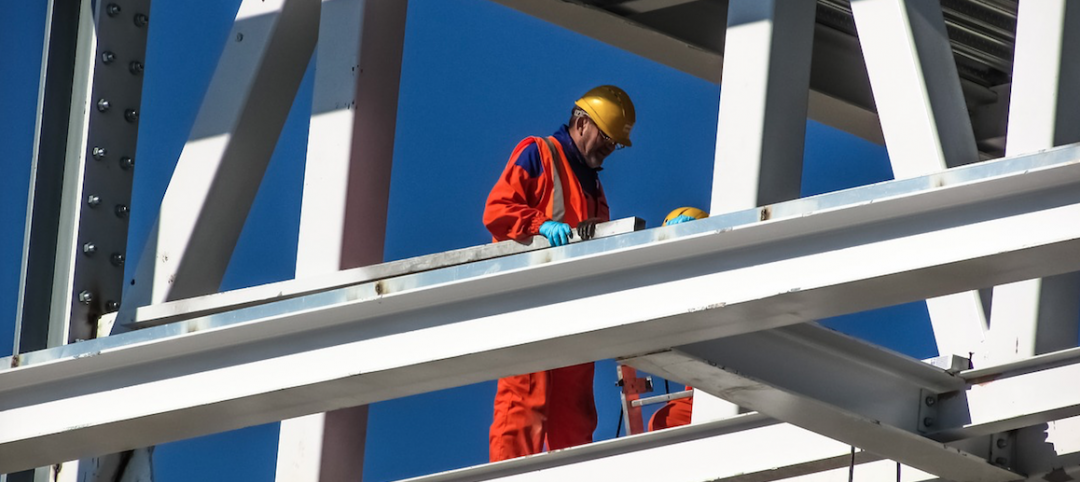Demand for different types of construction continued to diverge in June as residential construction increased for the month and the year while nonresidential construction spending fell again, according to a new analysis of federal construction spending data the Associated General Contractors of America released today. Officials noted the nonresidential declines include a steep drop in spending on highway and street projects and urged Congress to quickly pass a new, bipartisan infrastructure measure.
“The pandemic has created a tale of two construction industries, a residential market where demand continues to surge and a nonresidential market that is struggling to gain traction,” said Stephen E. Sandherr, the association’s chief executive officer. “The federal government has a real opportunity to boost nonresidential construction by passing the bipartisan infrastructure measure as quickly as possible.”
Construction spending in June totaled $1.55 trillion at a seasonally adjusted annual rate, an increase of 0.1% from May, and 8.2% higher than the pandemic-depressed rate in June 2020. Once again, residential construction saw monthly and year-over-year gains while non-residential construction spending lagged. The residential construction segment climbed 1.1% for the month and 28.8% year-over-year. The nonresidential construction segment fell by 0.9% compared to May and 6.6% compared to June 2020.
Private nonresidential construction spending fell 0.7% from May to June and 6.0% since June 2020, with year-over-year decreases in all 11 subsegments. The largest private nonresidential category, power construction, fell 1.9% year-over-year and 1.2% from May to June. Among the other large private nonresidential project types, commercial construction—comprising retail, warehouse and farm structures—retreated 2.1% year-over-year and 0.2% for the month. Manufacturing construction fell 0.7% from a year earlier and 1.1% from May. Office construction decreased 9.1% year-over-year and by 0.1% compared to May.
Public construction spending plunged 7.5% year-over-year and 1.2% for the month. Among the largest segments, highway and street construction declined 7.6% from a year earlier and 5.3% compared to May 2021. Public educational construction decreased 9.1% year-over-year and 0.8% in June. Spending on transportation facilities fell 5.7% over 12 months but was up 1.1% in June.
Association officials said the new bipartisan infrastructure measure would invest more than $1.2 trillion to build the nation’s roads, bridges, transit systems, airports, ports, and waterways, drinking water and wastewater systems, energy infrastructure and more. They added that Congress should pass the measure as quickly as possible to have the broadest impact on creating new construction career opportunities.
“It would be a shame if certain members of Congress were to hold new infrastructure investments, and the job opportunities they create, hostage to impose unrelated partisan measures that would undermine the economic recovery,” Sandherr said.
Related Stories
Market Data | Aug 29, 2017
Hidden opportunities emerge from construction industry challenges
JLL’s latest construction report shows stability ahead with tech and innovation leading the way.
Market Data | Aug 28, 2017
U.S. hotel construction pipeline is up 7% year-over-year
For the economy, the rate of growth may be low but it’s running on all cylinders.
Market Data | Aug 23, 2017
Architecture Billings Index growth moderates
“The July figures show the continuation of healthy trends in the construction sector of our economy,” said AIA Chief Economist, Kermit Baker.
Architects | Aug 21, 2017
AIA: Architectural salaries exceed gains in the broader economy
AIA’s latest compensation report finds average compensation for staff positions up 2.8% from early 2015.
Market Data | Aug 20, 2017
Some suburban office markets are holding their own against corporate exodus to cities
An analysis of mortgage-backed loans suggests that demand remains relatively steady.
Market Data | Aug 17, 2017
Marcum Commercial Construction Index reports second quarter spending increase in commercial and office construction
Spending in all 12 of the remaining nonresidential construction subsectors retreated on both an annualized and monthly basis.
Industry Research | Aug 11, 2017
NCARB releases latest data on architectural education, licensure, and diversity
On average, becoming an architect takes 12.5 years—from the time a student enrolls in school to the moment they receive a license.
Market Data | Aug 4, 2017
U.S. grand total construction starts growth projection revised slightly downward
ConstructConnect’s quarterly report shows courthouses and sports stadiums to end 2017 with a flourish.
Market Data | Aug 2, 2017
Nonresidential Construction Spending falls in June, driven by public sector
June’s weak construction spending report can be largely attributed to the public sector.
Market Data | Jul 31, 2017
U.S. economic growth accelerates in second quarter; Nonresidential fixed investment maintains momentum
Nonresidential fixed investment, a category of GDP embodying nonresidential construction activity, expanded at a 5.2% seasonally adjusted annual rate.
















